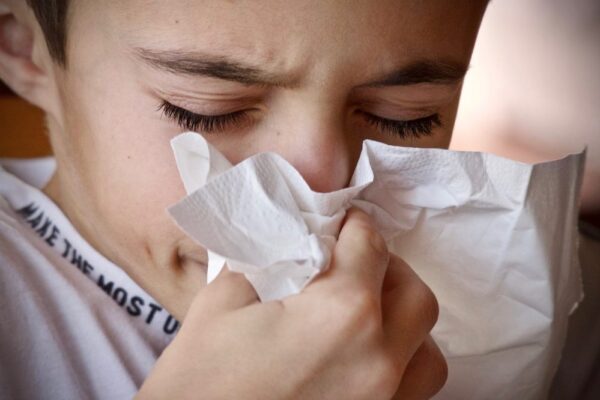Most people usually only associate allergies with spring, but allergies persist into and through the cold months as well. If you find yourself still sneezing and blowing your nose when winter descends, you might be showing symptoms of winter allergies.
Winter comes with its own set of potentially harmful allergens. Here we discuss the causes behind them, how to identify if you have winter allergies and how to avoid them or minimize triggers that can help keep you feeling your best all winter long.
What Causes Allergies During the Winter
Allergies are overreactions of the immune system to foreign particles. There’s an antibody response and an inflammatory cascade of events that leads to the classic symptoms — itchy or watery eyes, runny nose and sneezing.
Winter allergies are not typically caused by pollen, but more due to indoor allergens since you’re more likely to spend more time indoors during the winter months. Once it starts getting chilly and you settle indoors — with the windows closed and the heat on — your exposure to these indoor allergens can spike.
There are a variety of indoor allergens that can trigger symptoms during the winter. According to the American College of Allergy, Asthma, and Immunology (ACAAI), common indoor allergens that can trigger your winter allergies include:
- Dust Mites. Dust mites are microorganisms that can be found anywhere and are one of the most common indoor allergens. From bedding, furniture, and carpets, dust mites live in warm, damp environments and can trigger symptoms.
- Dander, pet hair or fur from shedding and proteins from skin cells can cause an allergic reaction at any time of year, especially during the winter months when people spend more time indoors.
- Indoor Mold. Molds are fungi that grow in moist areas inside and outside our homes. They thrive the most in places like bathrooms and kitchens, and unfortunately, many molds aren’t visible to the naked eye. Molds can spread via airborne spores. For those with an allergy, exposure can trigger sneezing, congestion, itchiness, and even worsen asthma symptoms.
- Cockroach Droppings. While they are not a sign of an unhygienic or unsanitary household, it’s important to be wary about these pests which can be found dark, moist areas, especially kitchen cupboards, or under sinks.
What are the Signs of Winter Allergies
The symptoms of winter allergies are similar to the flu or a cold. Below are some common symptoms of winter allergies:
- Sneezing
- Runny/stuffy nose
- Nasal congestion
- Itchy eyes
- Dry cough
- Scratchy throat
- Difficulty breathing
How Do You Differentiate Between Winter Allergies and a Cold
During winter, it can be difficult to identify a winter allergy from a cold. Both share overlapping symptoms, such as sneezing, runny nose, and congestion. However, allergies and colds have many different sources. Colds are caused by viral infections, while an allergy is your body’s immune system response to an irritant or trigger.
Another key difference between them both is the symptom duration. According to the National Institutes of Health (NIH), colds don’t usually last more than a couple of weeks, while allergies will continue as long as the allergen is present.
What You Can Do Find Relief from Winter Allergies
People with allergies are more at risk to develop asthma, a more serious and chronic condition. Some studies have shown that indoor allergies are associated more strongly with asthma than outdoor (pollen) allergies.
For relief from winter allergies, you can try lifestyle changes, home remedies and long-term clinical treatments. Here are some options to minimize exposure to allergens:
- Try over-the-counter medications. Antihistamines, such as cetirizine(Zyrtec) or fexofenadine (Allegra), can relieve symptoms effectively when taken regularly. You can also talk to your doctor before taking any over-the-counter medication, to discuss whether it’s appropriate for your symptoms and potential side effects.
- Use a humidifier. To keep the humidity levels right in your home, try using a humidifier. A humidifier reduces dryness in the air, helping with the decrease of mold development. Keep the humidity below 40 per cent or maximum of 50 per cent.
- Use a neti pot. To clear out allergens, use a neti pot or any nasal irrigation treatment to bring relief.
- Wash bedding regularly. Clean your bedsheets and pillow covers in hot water at least once a week, and avoid down pillows and comforters, which can form a habitat for dust mites.
- Use nasal sprays. Nasal sprays such as fluticasone(Flonase) and triamcinolone (Nasacort), can help relieve inflammation and other symptoms like a runny nose.
- Regularly clean, dust and vacuum. Have a deep clean of your home to get rid of any dust, mold growths, dander or pet fur from shedding.

